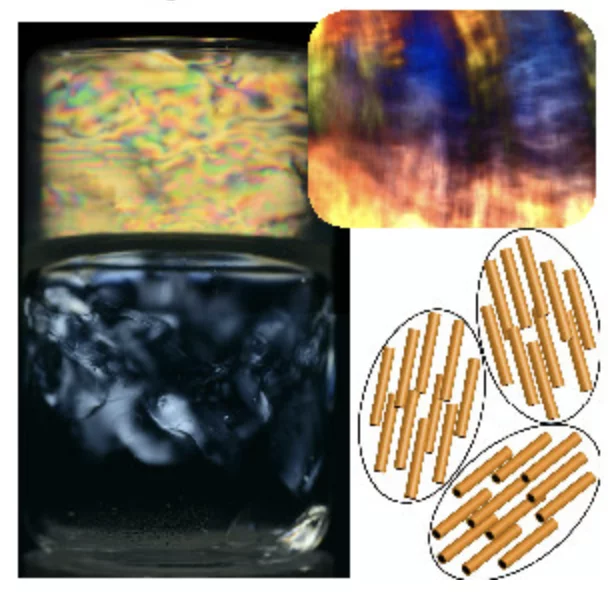Controlling the assembly of colloids in dispersion is a fundamental approach toward the production of functional materials. Nanocrystalline cellulose (NCC) is a charged nanoparticle whose colloidal interactions can be modulated from repulsive to attractive by increasing ionic strength. Here, we combine polarized optical microscopy, rheology, and small-angle scattering techniques to investigate (i) the concentration- driven transition from isotropic dispersion to cholesteric liquid crystals and (ii) salt-induced NCC phase transitions. In particular, we report on the formation of NCC attractive glasses containing nematic domains. At increasing NCC concentration, a structure peak was observed in small-angle X-ray scattering (SAXS) patterns. The evolution of the structure peak demonstrates the decrease in NCC interparticle distance, favoring orientational order during the isotropic− cholesteric phase transition. Small amounts of salt reduce the cholesteric volume fraction and pitch by a decrease in excluded volume. Beyond a critical salt concentration, NCC forms attractive glasses due to particle caging and reduced motility. This results in a sharp increase in viscosity and formation of viscoelastic glasses. The presence of nematic domains is suggested by the appearance of interference colors and the Cox−Merz rule failure and was confirmed by an anisotropic SAXS scattering pattern at q ranges associated with the presence of nematic domains. Thus, salt addition allows the formation of NCC attractive glasses with mechanical properties similar to those of gels while remaining optically active owed to entrapped nematic domains.
- About the CenterfermerAbout the Center
- Our Research
- Facilities
- SINQ: Swiss Spallation Neutron Source
- SμS: Swiss Muon Source
- CHRISP: Swiss Research Infrastructure for Particle Physics
- Scientific Advisory Committees
- Publications
- Jobs & Education



